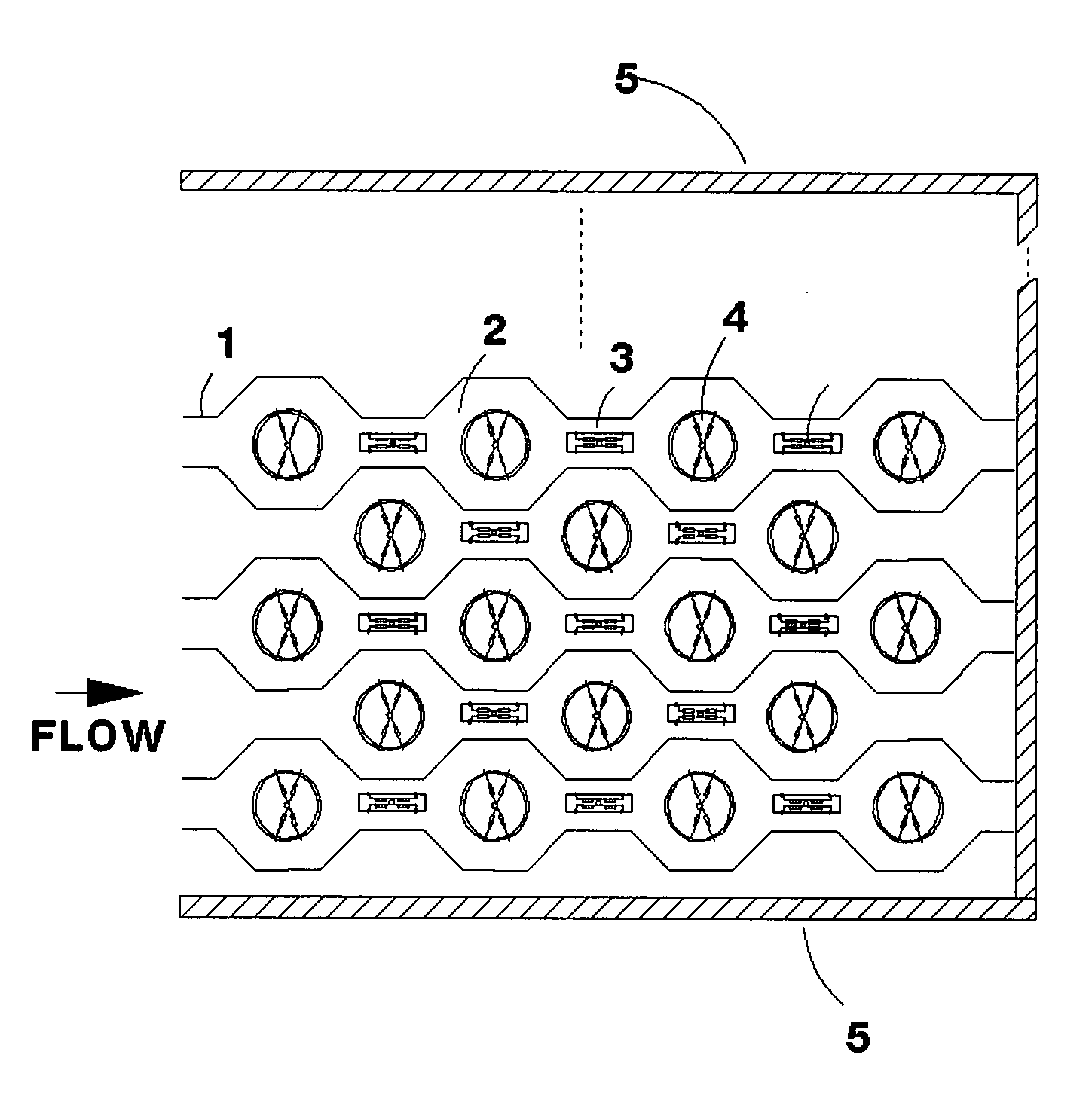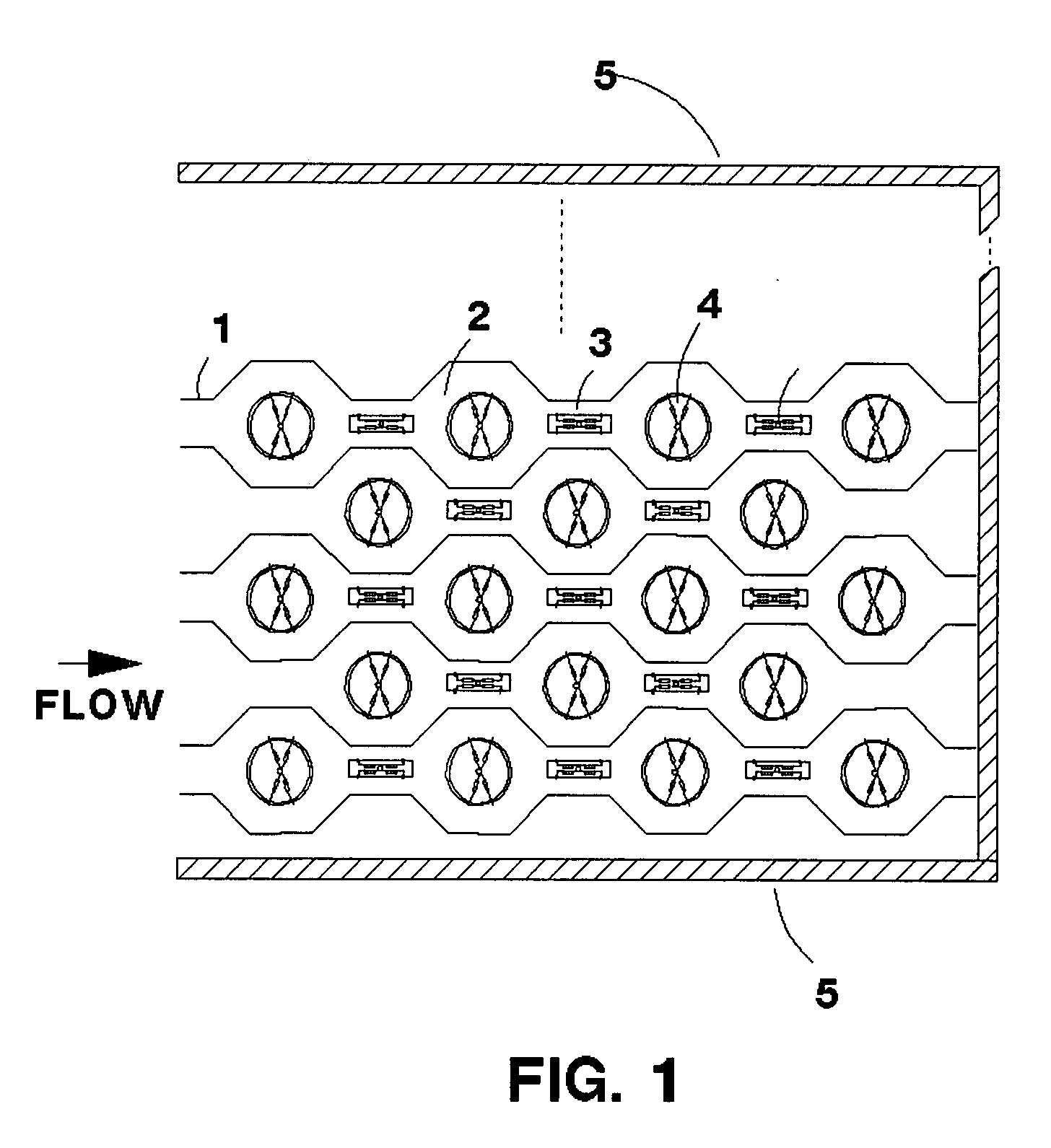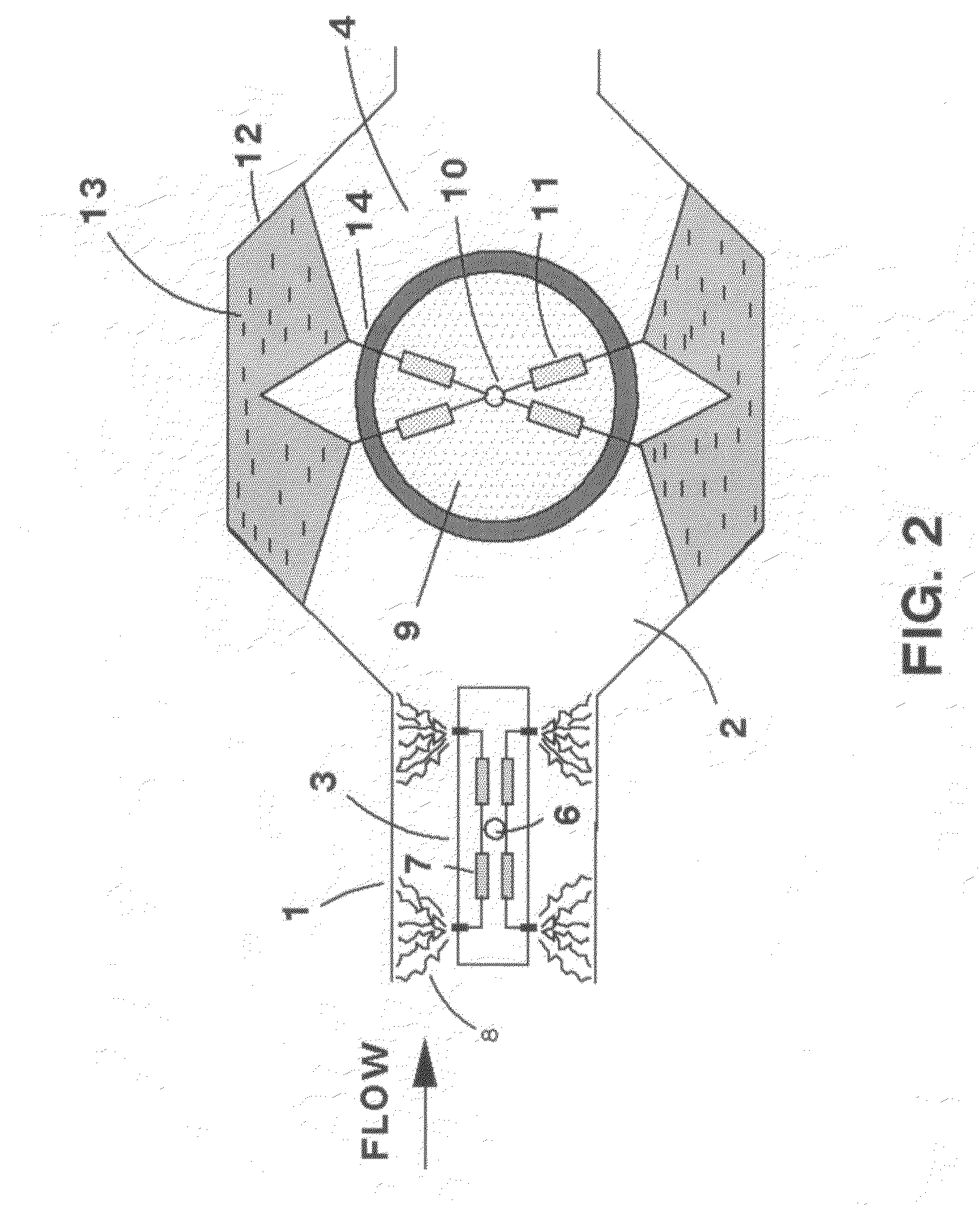Multi-stage collector for multi-pollutant control
a collector and multi-stage technology, applied in the field of pollution removal, can solve the problems of reducing affecting the efficiency of precipitators, and affecting the health of people, so as to improve the efficiency of precipitators, and increase the average electric field strength
- Summary
- Abstract
- Description
- Claims
- Application Information
AI Technical Summary
Benefits of technology
Problems solved by technology
Method used
Image
Examples
Embodiment Construction
[0018]The present invention makes use of non-thermal plasmas (NTP) to destroy harmful gaseous components. An NTP can be created by different gas discharges (DC, AC or pulsed) at atmospheric pressure. Prior art methods of creating an NTP are dielectric barrier discharge (DBD) and pulsed corona discharge (PCD). DBD and PCD have intrinsic limitations associated with necessity to use very narrow inter-electrode gaps and very short high voltage pulses (for DBD and PCD respectively) that results in difficulties under introducing these sources into real practice. An NTP in flue gas is a quasi-neutral mixture of charged particles (electrons, positive and negative ions), chemical active particles like radicals and photons. Photons are created due to collisions of energetic electrons with molecules of the background gas. A very useful property of an NTP is that the majority of the electric energy deposited in the treated gas goes into heating the electrons rather than heating the gas. The typ...
PUM
 Login to View More
Login to View More Abstract
Description
Claims
Application Information
 Login to View More
Login to View More - R&D
- Intellectual Property
- Life Sciences
- Materials
- Tech Scout
- Unparalleled Data Quality
- Higher Quality Content
- 60% Fewer Hallucinations
Browse by: Latest US Patents, China's latest patents, Technical Efficacy Thesaurus, Application Domain, Technology Topic, Popular Technical Reports.
© 2025 PatSnap. All rights reserved.Legal|Privacy policy|Modern Slavery Act Transparency Statement|Sitemap|About US| Contact US: help@patsnap.com



